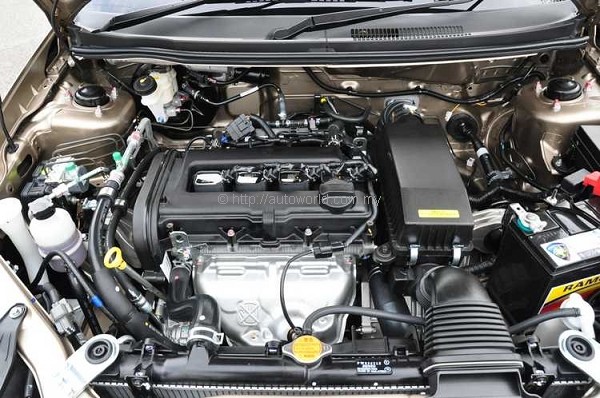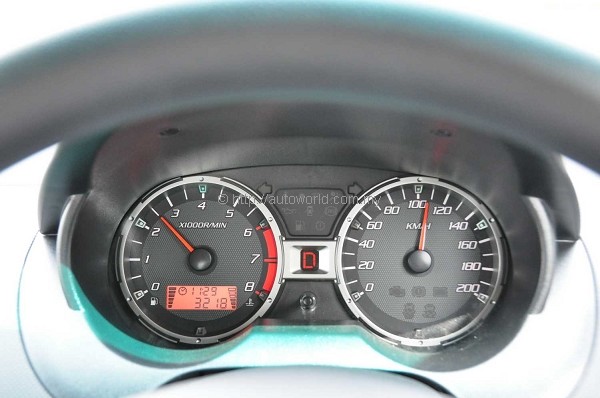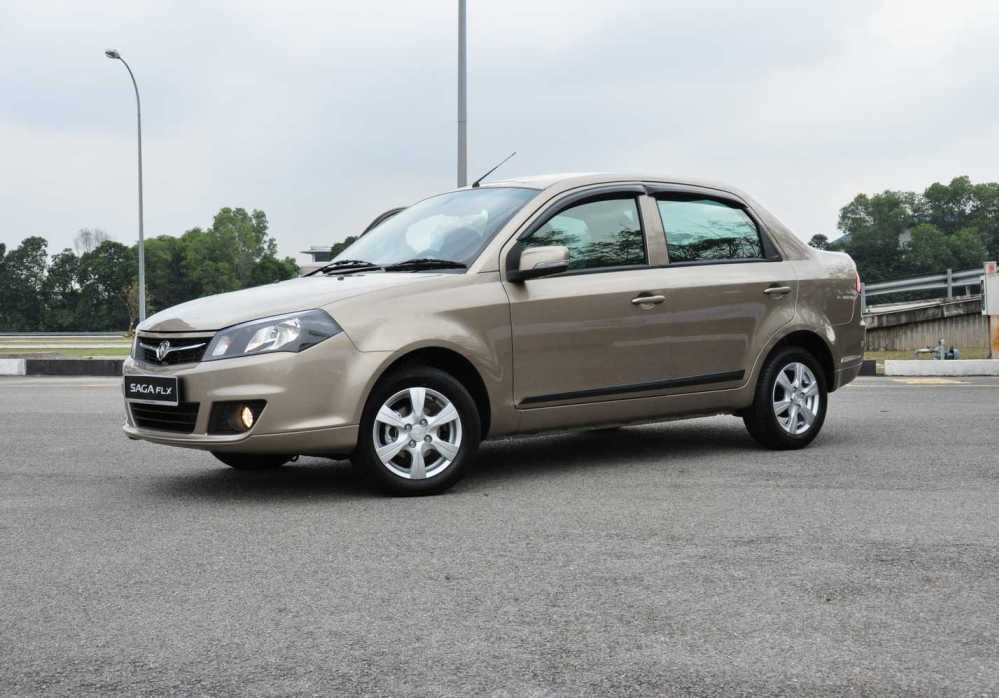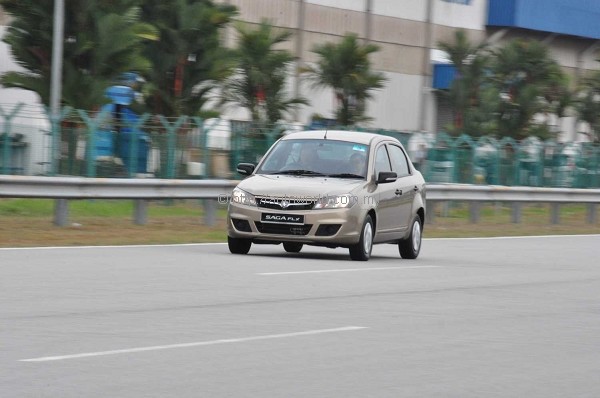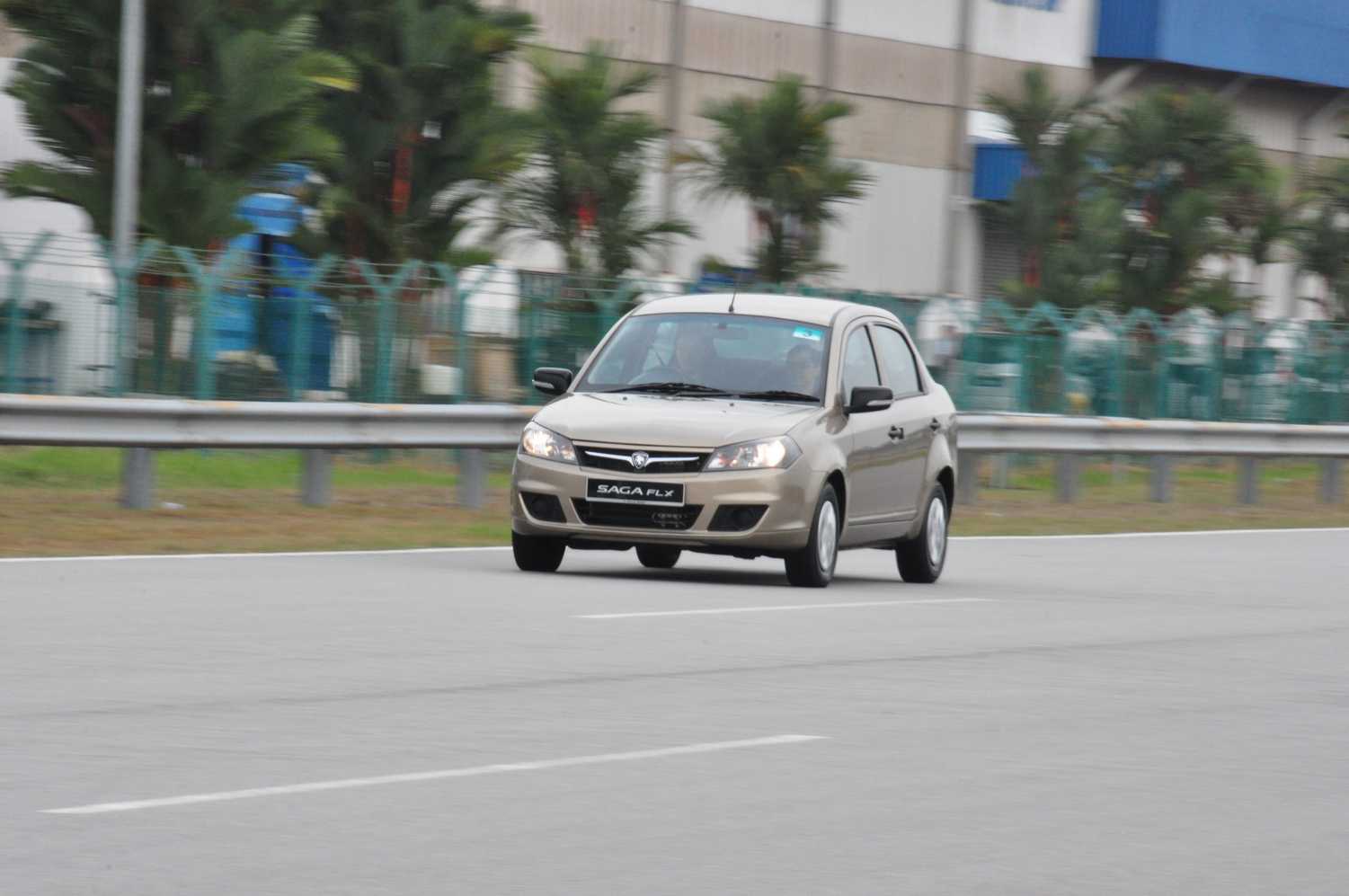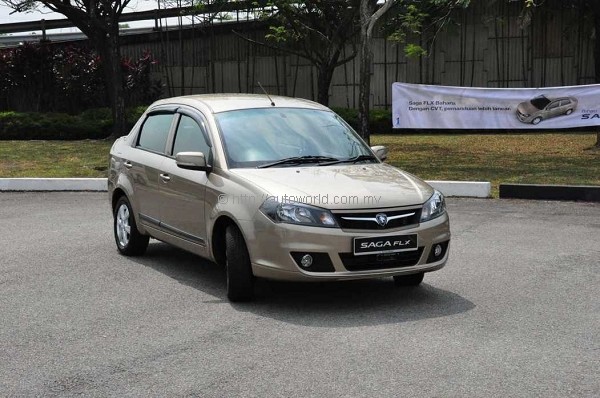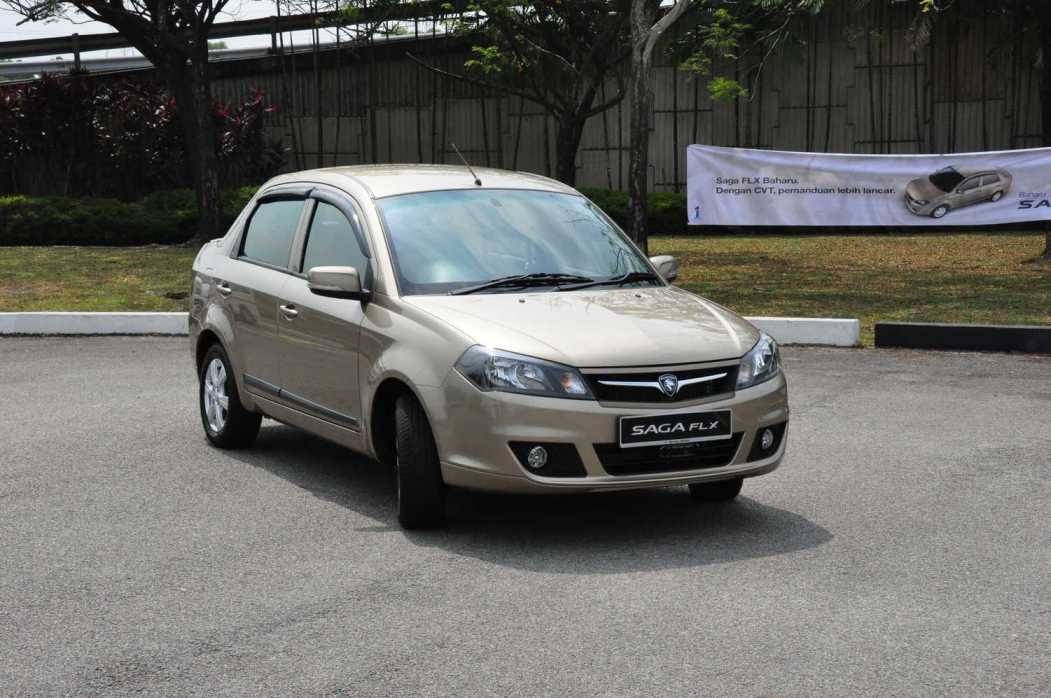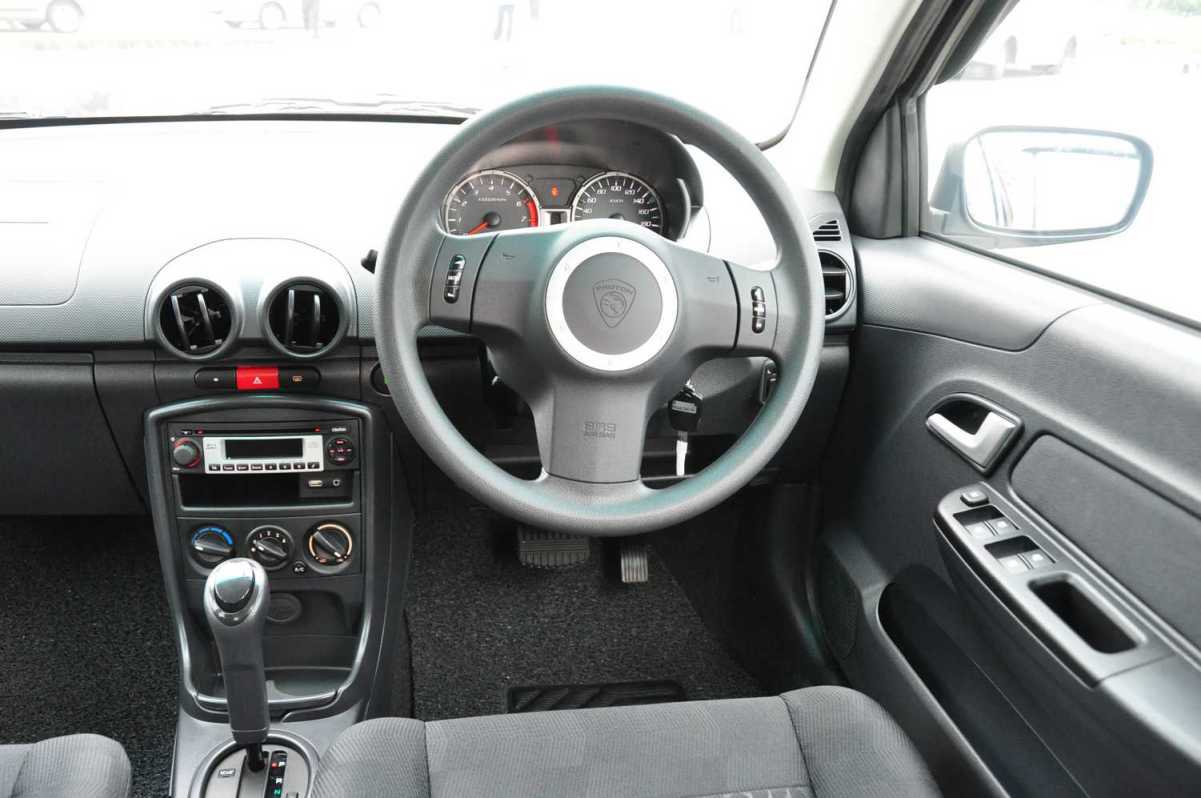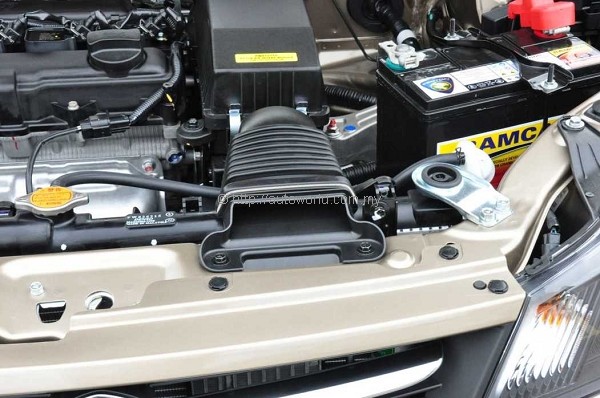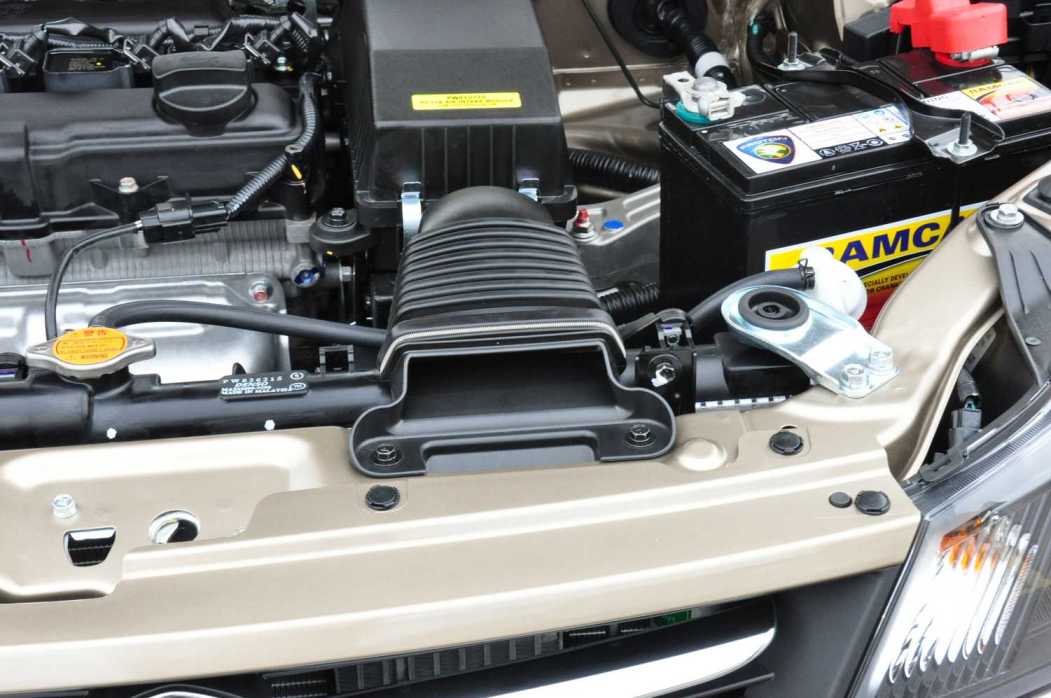New Saga FLX – Now much improved with CVT
Shah Alam, 27 July 2011 – Proton arranged a special session for motoring journalists to check out the newly introduced Proton Saga FLX today at the Proton Test Track facility in its plant at Shah Alam.
In terms of looks, the Proton Saga FLX looks exactly like the standard Saga FL launched recently – the only difference is in the engine tuning, which includes an improved IAFM intake system and most importantly, a new generation CVT from Punch Powertrain in Belgium. Punch has operations in Belgium and China, with an annual capacity of up to half a million transmission sets annually. Taking the hot climate into consideration, the CVT comes with a separate oil cooler mounted in front of the engine radiator.
According to a spokesman for the company, the oil cooler keeps the oil temperature down to about 70 degrees Celsius, well within the CVT’s operating temperature limits. Fuel consumption figures from the 94 horsepower engine as released by Proton claims a 10 percent improvement – at a steady 90 km/h speed, the fuel consumption as tested by Proton in their own tests is as low as 6.0 litre per 100 kilometres. The other variant with a 5-speed manual transmission is said to give 5.7 litres per 100 kilometres.
We got a chance to test both the current 4-speed automatic transmission model against the CVT model, and the engine performance seems to bear out the claims of better fuel consumption. On the current 4-At model, the engine turns over at approximately 3,000 RPM at 100 km/h, whereas with the CVT, the engine revolution is around 2,500 RPM. Translated to the road, this means that the engine is turning 500 revolutions less every minute, and this in turn translates into an improvement in fuel consumption.
According to Proton, the CVT will replace the automatic transmission in the Saga, and it certainly looks like this will permeate into the other models. As an aside, the manual transmission will be a new gearbox supplied by Gertrag of Germany. Gertrag makes approximately 2.6 million transmissions a year.
On a short drive around the Proton test facility in Shah Alam, I found the CVT quite interesting – acceleration is smooth, with no shift shock, and the SAT function, engaged simply by pushing a button, gives it a vestige of a manual transmission, although in truth, it is actually better to keep it in ‘auto’ mode. Driven hard, the engine note does tend to be a little more urgent, understandably so as the engine keeps up a consistent 5,000+ RPM while speed builds up, but once you ease off the throttle and settle down to speeds around 100 to 110 km/h, the engine is noticeably quieter, and the engine RPM is visibly and audibly lower than that of the standard 4-AT – definitely there will be improvements in fuel economy. Therefore, if you are the type of person to whom saving fuel is important, this is certainly a car to consider.
We will be getting a car for a longer test drive in due course – stay tuned for our test report.





